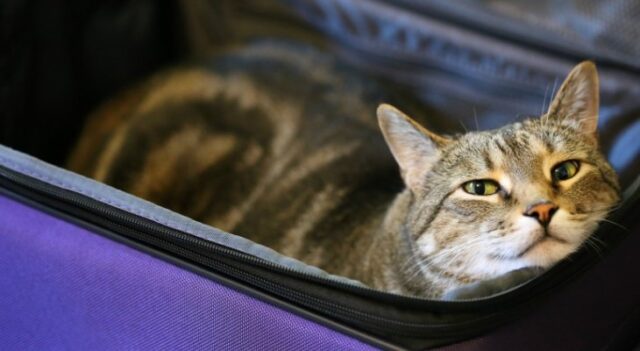
Planning and preparation are necessary when traveling with family pets. Consider whether your pet is comfortable when traveling. Some animals, like some people, function better in familiar surroundings. A car-sick animal can make a trip miserable for everyone. Some ill or physically impaired dogs and cats cannot withstand the rigors of travel. If this is the case, discuss options such as using a reliable pet-sitter or a clean, well-managed boarding facility with your veterinarian.
If you will be staying with friends along the way, be considerate. Find out in advance if the pet is welcome. The same goes for hotels, motels, parks, and campgrounds. Always check whether pets are allowed or kennel facilities are available. If the pet must be left alone in a hotel room, place a “Do Not Disturb” sign on the door and inform the maid and the front desk. Consider bringing along a portable kennel for use in hotel rooms or the homes of friends or relatives who are not comfortable with your pet loose when no one is home.
A few general tips apply whether you travel by car or plane. Be sure your pet is properly identified with a current tag or a microchip. Grooming (bathing, combing, trimming nails) before a trip, plus having its favorite food, toy(s), and dishes available will make your pet more comfortable. Have both proof of rabies vaccination and a current health certificate with you when crossing state or international borders. Before undertaking any trip, consult your veterinarian to be sure that all required vaccinations are up-to-date and to receive a health certificate within ten days of travel.
Air travel is of most concern to pet owners. You can minimize the chances of an unpleasant experience by following a few guidelines. Federal regulations require that pets be at least 8 weeks old and weaned at least 5 days before flying. Generally, a health certificate (which is not more than 10 days old) must be available before pets will be permitted to fly. A valid rabies vaccination certificate will also be required. Contact the airline well in advance for specific regulations and to secure your pet’s reservation. Try to book a nonstop, midweek flight and avoid plane changes if possible. During warm weather periods choose early morning or late evening flights. In colder months, choose midday flights. Arrive at the airport early, exercise your pet, personally place it in its crate, and pick up the animal promptly upon arrival. Do not take leashed animals on escalators.
Transport crates, available from most airlines or pet shops, must:
- Be large enough to allow the animal to stand (without touching the top of the cage), turn around, and lie down.
- Be strong and free of interior protrusions, with handle or grips.
- Have a leakproof bottom that is covered with plenty of absorbent material.
- Be purchased in advance so the pet can become acclimated to the crate prior to travel.
- Be appropriately and clearly labeled. Include your name, home address, home phone number, and destination contact information, as well as a designation of “Live Animals,” with arrows indicating the crate’s upright position.
- Be ventilated on opposite sides, with exterior rims and knobs so that airflow is not impeded.
Ask your veterinarian for specific feeding instructions. For your pet’s comfort, air travel on an almost empty stomach is usually recommended. The age and size of your pet, time and distance of the flight, and your pet’s regular dietary routine will be considered when feeding recommendations are made.
